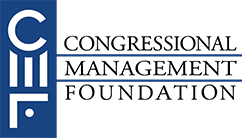The most effective tool for accomplishing your communication objectives is the staff meeting. Staff meetings can be used to chart progress, keep staff informed of all office activities, coordinate between Washington and district/state offices, and determine how close you are to meeting the goals of your strategic plan. However, staff meetings can also become group gripe sessions, boring diatribes dominated by a staffer or the Member, and a show and tell which drags on endlessly (making everyone wish they were back at their desks). Brisk, interactive meetings can be used to build a team, fine‑tune your plan, and make minor adjustments that reflect changing staff or political realities.
Tips for effective staff meetings:
- Designate a meeting facilitator. Most Chiefs of Staff believe that it is more effective for them to run a meeting than for the Member.
- Have a clear purpose and written agenda for the meeting.
- Establish a starting and ending time for the meeting (and stick to it!).
- Inform staff ahead of time of their responsibilities for the meeting (bringing their calendars, briefing other staff on relevant issues, note-taking, etc).
- Encourage staffers to participate but not to dominate. Everyone's input is valuable.
- If certain issues or projects require extensive planning or discussion, schedule another meeting for the relevant staff rather than discussing it with the full group.
- Do not use staff meetings to discuss the performance of individuals, except for giving them a word of praise.


